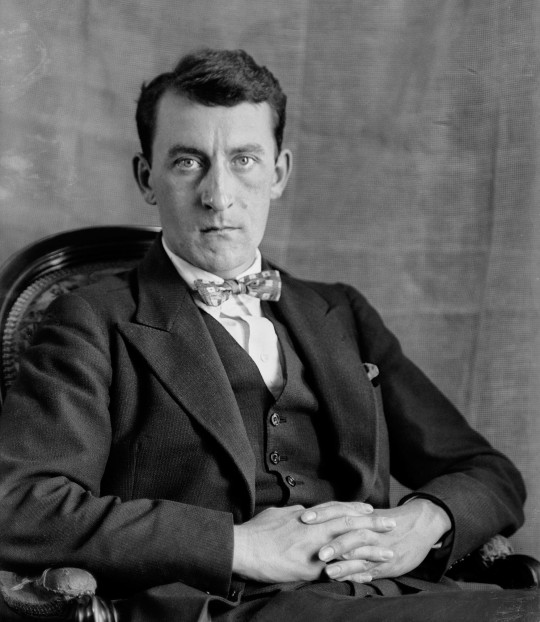#robert mcalmon
Text

Charles Demuth Distinguished Air. 1930. Watercolor and graphite on paper: 35×30 cm (14×12 in).
#charles demuth#lgbtqia#1930s#watercolor#art history#museum#jean cocteau#constantin brancusi#queer history#queer#bi#lgbtq#gay art#gay artist#culture#art#robert mcalmon#20th century#gay#pride#🎨 📚
49 notes
·
View notes
Text
They're wraiths, all of them. They aren't people. God knows what they've done with their realities. - Robert McAlmon
#Robert mcalmon#quotes#1920s#writers#writing#flappers#postwar#wwi#the lost generation#the bright young things#classic literature#poets
23 notes
·
View notes
Text
Samedi 3 février 2024
Du blues et un cousin
Premier récit de l'année, et j'ai attendu d'être en février pour m'y mettre : décidément la procrastination a de beaux jours devant elle...
Mon quotidien n'a pas changé en cette nouvelle année et ce sont toujours mes lectures qui dominent ma vie et mes humeurs, et heureusement, j'en ai de bonnes, des lectures, ces jours ci.
Pour trouver des idées d'ouvrages à lire c'est toute une histoire, toute une aventure, je vais de thème en thème... l'an dernier j'étais dans les bouquins sur l'art, ça m'a entraîné à lire des livres sur les collectionneurs d'art et c'est comme ça que j'ai fini par acheter un livre de Maurice Rheims, un célèbre commissaire priseur académicien... alors j'apprends, et d'ouvrage en ouvrage, des noms reviennent et finissent par me devenir familiers, ainsi par exemple je découvre l'existence de Calouste Gulbenkian, personnage qui m'a l'air important dans l'histoire des collectionneurs d'art, voilà une piste à creuser...
L'autre soir, je suis allé voir mon premier concert de l'année, en compagnie de Justine, son frère Arthur et Olivier qui nous a rejoint (je ne l'avais plus croisé irl depuis des lustres).
C'était le concert d'un bluesman nommé Robert Finley. Le jeune homme qui faisait la première partie chantait lui aussi du blues mais en mode plus dépouillé, façon un mec une voix une guitare. Le mec en question, nommé Nate Myers, avait un accent à couper au couteau et quand il parlait entre deux chansons je ne comprenais qu'un mot sur dix. J'ai pensé qu'il avait bien du courage, de jouer du blues comme ça, à l'ancienne, en 2024, parce que c'était vraiment pas la meilleure manière de trouver le succès, mais je pense qu'il chante pour l'amour du blues, de toutes façons, pas pour rencontrer le succès. Parce que de nos jours, pour vendre des millions de disques avec du blues il faut s'appeler les Rolling Stones.
Après ça, Robert Finley a fait son apparition. Vieil homme, presque aveugle, il était guidé par sa fille qui tenait aussi le rôle de choriste. Son groupe (des jeunes blancs) était au top et son set fut généreux. Quant à moi, j'ai souffert physiquement et j'ai terminé le concert assis contre un mur mais ce fut tout de même une bonne soirée.
Quelques jours après ça nous avons reçu mon cousin Jimmy à la maison. Nous étions tous heureux de le recevoir, et mes parents ne l'avaient pas vu depuis 10 ans déjà.
Il est resté peu de temps et à passé la nuit chez nous, dormant à côté de mon lit : je crois que ça faisait littéralement 30 ans qu'on avait pas partagé un toit lui et moi.
Nous avons passé notre temps à échanger des souvenirs, mon cousin étant aussi nostalgique que moi. Nous avons bien rigolé en évoquant le pépé, la mémé et les années 90.
Je recroiserai probablement Jimmy dans quelques jours puisque je me rendrai à Paris bientôt pour y passer quatre jours et trois nuits. J'ai hâte, Paris me manque toujours beaucoup et j'ai l'espoir d'y croiser quelques personnes qui sont chères à mon cœur.
La semaine dernière j'ai terminé l'autobiographie de Jacques Dutronc qui était aussi courte qu'intéressante, et j'ai enchaîné avec un livre signé Robert McAlmon qui parle du Montparnasse des années folles. J'adore ces récits là, le Paris de l'entre deux guerres est définitivement un de mes lieux et une de mes périodes préférées.
Qu'écrire de plus ? L'autre jour, j'ai rencontré L. dans un café en face de la gare de Clermont-Ferrand. Nous nous y rencontrions pour la première fois et ça s'est plutôt bien passé, nous avons discuté pendant plus de deux heures, sans voir le temps passer, avant de devoir nous quitter parce qu'elle avait un train à prendre.
J'espère bien la revoir.
Oh, et je vous ai déjà parlé de ma nouvelle passion pour Dua Lipa ? Je n'ose pas trop le dire parce que c'est vraiment pas en accord avec ma culture rock'n'roll mais, que voulez vous, je ne résiste pas à une bonne chanson pop et l'album de Dua Lipa en est truffé.
Je vous laisse sur cette confession, à bientôt !
Bande son : Future Nostalgia, Dua Lipa
0 notes
Text
Glenway Wescott Personally: A Biography
“In 1925 Glenway Wescott sailed for France to write his second novel, to join the other American expatriates living in Paris, and to become a literary figure within the modernist movement that Ernest Hemingway and Gertrude Stein termed the Lost Generation. His second novel, The Grandmothers (1927), went through twenty-six printings within six months and won the Harper Prize Novel Award—its publication had been likened to the appearance of Winesburg, Ohio and Spoon River Anthology. Wescott met Hemingway, Stein, F. Scott Fitzgerald, Ford Madox Ford, Djuna Barnes, Jean Cocteau, Robert McAlmon, and other luminaries of that period. In fact, Hemingway parodies Wescott, who had been an openly gay man and a literary rival, as Robert Prentiss in The Sun Also Rises. For all intents and purposes, Hemingway first introduces Brett Ashley, in today's terminology, as a "fag hag" along with Prentiss/Wescott and other gay men.
Glenway Wescott (1901-1987), however, has been marginalized in American literary history. Fortunately, with Jerry Rosco's engrossing and well-written biography, a rediscovery of this important and long-neglected American writer is underway. Wescott wrote the novella The Pilgrim Hawk (1940), which is about two American expatriates in France and their encounter with an Irish couple and their pet pilgrim hawk. Many critics consider this work to be one of the most distinguished novellas of twentieth-century American literature—this important book, long out of print, has been recently republished with an introduction by Michael Cunningham. Wescott also wrote a best-selling novel called Apartment in Athens (1945), the story of a Nazi officer's occupation of a Greek family's home during W.W.II—this novel, too, has been long out of print but will soon be republished. He was elected to and served as president of the National Institute of Arts and Letters in the late 1950s and early 1960s. As the self-proclaimed Dean of Homosexuals, he did extensive work for Dr. Alfred C. Kinsey and the Institute of Sex Research. He published an exquisite collection of critical essays and reminiscences called Images of Truth (1962) about his friendship and admiration for six important writers: Katherine Anne Porter, Somerset Maugham, Colette, Isak Dinesen, Thomas Mann, and Thornton Wilder.
Rosco, however, did not write a literary biography in that analysis and explication of his novels, short stories, and essays are kept to a minimum. His strategy was to concentrate on the life, the historical times, the friendships, and the lovers of this writer, especially his lifelong partnership with museum administrator Monroe Wheeler. Wescott met, knew, or formed intimate friendships with most of the literary and artistic figures of the twentieth century—Rosco's index is a virtual Who's Who of literature and art. Rosco has done extensive and meticulous research to illuminate not only the life of this extraordinary man of letters but also the gay subculture of Paris and New York City. To read through this biography is to read through the making of American literary history.”
- Ted Wojtasik for Oyster Boy Review
0 notes
Text
“For Instance,” Robert McAlmon
Vegetables
and jewelry, rightly displayed,
have an equal amount of fascination.
Carrots, for instance,
piled–
ferntops, bodies, and hair roots
so bound together in bunches
bunches laid in rows
of oblong heaps with magnitude,
are sufficient to arrest any seeing eye.
Cabbages with a purplish tinge,
when of grandeur, with widespread petals,
as they rest in heaps
catching the dawn’s first filtering of sunlight,
compare satisfyingly with roses enmassed,
with orchids, sunflowers, tulips,
or variegated flowers
extravagantly scattered.
While as to onions,
little can excel their decorative effect
when green tubes, white bulbs, and grey hair roots
rest in well arranged, paralleled piles
about which buxom women congregate,
laughing and chattering in wholesome vulgarity.
Crispness,
a cool indifference to the gash of knives,
to the crush of kind,
or to any destiny whatsoever,
has granted the vegetables an arrogance of identity
one would be foolhardy to strive after
with heated impressionable imagination.
Vegetables,
given their color,
scent and freshness,
too easily attain a cool supremacy of being
for our fumbling competition.
4 notes
·
View notes
Text
These boys are all right, but, my god, they must have difficulty in knowing which are their own bodies, and which limbs are their own...
Robert McAlmon, “Distinguised Air: Grim Fairy Tales” (1925)
17 notes
·
View notes
Quote
... I had some time ago decided that the money-makers on the grand scale are monomaniacs and fanatics and self-willed. - Robert McAlmon
pixelecstasy
1 note
·
View note
Photo

Strange Vehicle - Dayton Ohio by Robert McAlmon on Flickr.
4 notes
·
View notes
Text
The Circuitous Path of Papa and Ezra
The Circuitous Path of Papa and Ezra
This review originally appeared here in The American Conservative.
Ernest Hemingway, fresh off his marriage to Hadley Richardson, his first wife, arrived in Paris in 1921. Paris was a playground for writers and artists, offering respite from the radical politics spreading across Europe. Sherwood Anderson supplied Hemingway with a letter of introduction to Ezra Pound. The two litterateurs met at…
View On WordPress
#Archibald MacLeish#e.e. cummings#Ernest Hemingway#Ezra Pound#Fascism#Ford Madox Ford#Gertrude Stein#Hadley Richardson#Il Duce#James Joyce#Jean Cocteau#Malcolm Cowley#Marianne Moore#Mussolini#Olga Rudge#Pablo Picasso#Paris#Robert McAlmon#T.E. Hulme#T.S. Eliot#The American Conservative#The Cantos#Walter Morse Rummel#William Butler Yeats#William Carlos Williams#Wyndham Lewis
0 notes
Text
2017 Reading Round-Up: Top 5
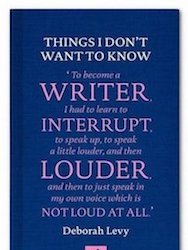
1. Things I Don’t Want to Know by Deborah Levy (Notting Hill Books, 2013)
I don’t know why more people haven’t read this book. It’s the kind of book avid lady readers should be raving about to each other and reading reviews of in Electric Lit and the New Yorker to see what other smart women think of it. But no, it’s actually even hard to find in the U.S., and I haven’t talked to anyone who’s read it. (She’s much better known in the UK/EU. I picked up it up in a fantastic bookstore in Galway.) I read this slim book in one afternoon - it’s a long essay commissioned in response to Orwell’s own short essay, “Why I Write.” Levy’s work touches on the first taste and shock of injustice experienced in childhood (in apartheid South Africa, masterfully from a child’s point of view in all its complexity), the experience of motherhood post 1970s feminism, travel and becoming someone else while “away”, risk-taking, the desire to write, figuring out how to write as a woman. It made me cry in a deep and satisfying way (on a bus to Dublin, no less!) that was a relief.

2. Frantumaglia: A Writer’s Journey by Elena Ferrante, trans. Ann Goldstein (Europa Editions, 2016)
These interviews and essays gave me that Emily Dickinson physical feeling of having the top of my head taken off, in particular the one that gives the collection its title. (“Frantumaglia” is Ferrante’s mother’s Neapolitan word for the mass of experiences and feelings that overwhelms and fogs the mind at times, the raw, wet stuff that writing is shaped from… I think). Particularly striking: her thoughts on the Dido myth and its relationship to women’s writing (Carthage originally intended as a city built on love); her mother’s work as a seamstress, how the dresses she made were and were not her; her exploration of her childhood violent wishes and feelings; the shifts in her motivations for remaining anonymous over time; thoughts on writing itself, what it means to be truthful when writing fiction.

3. Slow Days, Fast Company: The World, the Flesh and L.A. by Eve Babitz (NYRB Classics, 2016 (reissue), originally published 1977)
Essays on 1970s L.A. by the anti-Joan Didion, voluptuous and exuberant Eve Babitz, born a Hollywood insider. She is also witty, erudite and snobbish in her own way, as she gives accounts of quaalude-fueled threesomes, and ending up in the most unexpected places, like a baseball game or San Bernardino, via her lovers. There are also her odes to other women, their talent and style, and her thoughtful takes on fame, addiction, and public image. Thank Goddess that NYRB brought her work back into print.
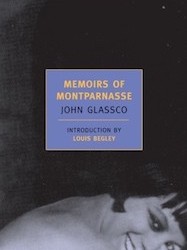
4. Memoirs of Montparnasse by John Glassco (NYRB Classics, 2007, originally published 1973) - John Glassco
Nineteen-year-old Canadian bisexual Glassco sets off for Paris in 1927 with his school pal, to become a poet and burn through his father’s money. Publisher and writer Robert McAlmon takes them under his sordid wing for a long bender in Luxembourg and the French Riviera. Glassco chats with Robert Desnos, sasses Gertrude Stein, judges beefy Hemingway, and writes a little bad Surrealist poetry along the way. There’s probably a lot of bending of fact, as this was written decades later, but it’s entertaining and wonderfully written. A fun, queer counterpoint to the hacky “Moonlight In Paris” view of Montparnasse in its golden age - the drag queen bars and lesbian literary circles, the roustabouts and pornographers, the would-be artists and dilettantes, who were also hanging around the cafes, never quite finding the time to work on their masterpieces…
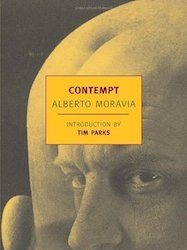
5. Contempt by Alberto Moravia, trans. Angus Davidson (NYRB Classics, 2004, original 1954)
I felt so anxious reading this, it was a relief when it was over. The narrator just keeps fucking things up - it’s unbearable! Really masterful portrayal of an unreliable narrator. It reminded me of Lolita, a bit, in the way that the narrator is trying to elicit sympathy in his account, while unwittingly showing the ways in which he’s monstrous. There is also beautiful vivid imagery of the Italian coastline and Capri. I enjoyed the various characters’ ruminating on possible interpretations of The Odyssey, and how they informed the narrative.
7 notes
·
View notes
Text
SEPTEMBER 2: Bryher (1894-1983)
On this day in 1894, the popular novelist and magazine editor, Bryher, was born. Known simply by her famous pen name, Bryher was a member of the iconic group of American expat lesbians in the 1920s and founder and editor of the film magazine Close Up.
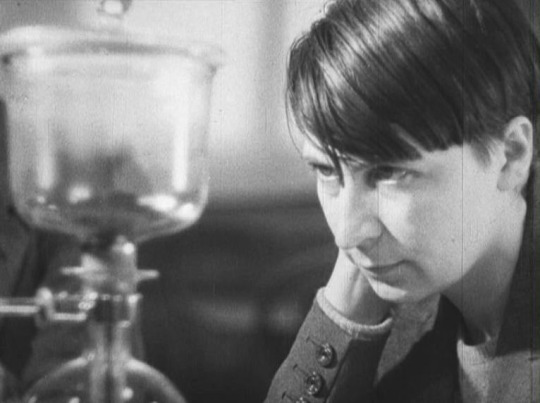
Bryher sports her famous “boyish” haircut and stares off into the distance (x).
Annie Winifred Ellerman was born on September 2, 1894 in the seaside town of Margate in Kent, England. She came from a long line of outrageously wealthy ship-owners and her father, John Ellerman, was declared the wealthiest Englishman who had ever lived at the time of his death in 1933. As a child, she traveled extensively throughout Europe. It was on a trip to the Isle of Scilly where she discovered Bryher Island and found her future pen name. After leaving boarding school and settling down in Paris, she inserted herself in the “Lost Generation” of writers and found community in the lesbian salons of the day. Her family’s fortune allowed her to financially support many of her writer friends, such as James Joyce and Edith Sitwell. Before long, she had had enough of observing her artistic friends and began publishing poetry and novels herself, of course, under the single name “Bryher.”
Bryher’s personal journals reveal that she knew she was a lesbian from a young age. In 1918, she met the love of her life, the bisexual poet Hilda Doolittle, who she would enjoy an open relationship with until her death. Due to her being a member of the prestigious Ellerman family, reputation was everything and Bryher was forced to enter into multiple marriages of convenience. The first was with a man named Robert McAlmon in 1921, but the two eventually divorced in 1927. She would later marry another man named Kenneth Macpherson, who was Hilda’s lover. The arrangement allowed for Bryher to live with Hilda without arousing the suspicions of polite society. The three would eventually create the film magazine Close Up and the production company Pool Group together.

Bryher and her partner of over 40 years, Hilda Doolittle, with Hilda’s daughter Perdita in Carmel, California, 1921. Bryher later adopted Perdita and helped to raise her along with Hilda (x).
During World War II, Bryher urged Close Up readers to resist fascism and to take action against Hitler’s genocide of the Jewish people, and she herself helped over 100 people escape Nazi persecution by turning her house in Switzerland into a refugee home. In her later years, Bryher became known as a popular historical novelist and was lauded for her depictions of Europe’s WWII years. She eventually passed away on January 28, 1983.
-LC
#365daysoflesbians#bryher#hilda doolittle#H.D.#lesbian history#wlw history#gay history#lgbt history#lgbtq history#lesbian#wlw#sapphic#gay#lgbt#lgbtq#1920s#people#uk
166 notes
·
View notes
Text
Alcohol en de jaren ‘20

Ernest Hemingway (rechts) rond 1927 bij zijn eerste bezoek aan Spanje, of liever gezegd aan de stierengevechten waarvan hij later zo’n groot bewonderaar zou blijken. Maar het gaat hier eigenlijk meer om de man links op de foto, de Amerikaanse schrijver en uitgever Robert McAlmon (1895-1956), die de reis naar Spanje, vanuit Parijs, met Hemingway ondernam. McAlmon financierde die reis ook vermoedelijk - hij was in goeden doen, want hij leefde van geld van zijn echtgenote Annie Winnifred Ellerman, alias de dichteres Bryher. Zij was biseksueel en was in 1921 met McAlmon, zelf ook biseksueel, getrouwd om voor haar steenrijke Britse vader een liefdesverhouding met een vrouw aan het oog te onttrekken. McAlmon was in 1921 vanuit New York, waar deze zoon van een rondtrekkende dominee een bescheiden carrière als dichter en oprichter van een litterair tijdschrift had gemaakt, met Bryher naar Londen vertrokken. Maar hij hield het in Londen niet lang uit en reisde door naar Parijs - om daar een toonaangevende, en inmiddels goeddeels vergeten coryfee van de Amerikaanse gay twenties te worden.
Man, dat waren tijden! Filmregisseur Woody Allen heeft ze een paar jaar geleden in zijn Midnight in Paris nog eens in het zonnetje gezet. Een hedendaagse Amerikaanse toerist met een oersaaie bruid wordt daarin terug getoverd naar de Amerikaanse bohème in het Parijs van de jaren twintig - een explosie van creativiteit, bevolkt door louter schilderachtige beroemdheden. Nou ja, behalve de inmiddels grotendeels vergeten McAlmon dan. De Française Maud Simonnot, in het normale leven werkzaam bij de uitgeverij Gallimard, heeft haar eerste boek aan hem gewijd. La nuit pour adresse is een biografisch essay, en vermoedelijk het eerste boek over het leven van McAlmon dat buiten de Verenigde Staten verschenen is. En dan nog kwamen de Amerikaanse studies over hem meestal voort uit de gender studies-hoek, in verband met de seksuele oriëntatie van McAlmon.
Wat vooral opvalt - zelfs bij Woody Allen maar ook in dit boek - is hoe Amerikaans het verhaal van de Amerikaanse scene in het Parijs van de jaren 1920 is. Men treft elkaar elke dag in een reeks beroemde café’s en restaurants rond Saint-Germain-des-Prés, Montparnasse en Montmartre, maar van veel contact met de Franse artistieke bohème van die tijd, de surrealisten bijvoorbeeld, is geen sprake. Alleen Jean Cocteau lijkt alom tegenwoordig. De Amerikanen functioneren min of meer als een kliekje, zonder noemenswaardige interactie met Europese kunstenaars en intellectuelen. Dat kan natuurlijk ook aan de Fransen en andere Europeanen gelegen hebben, of aan wederzijdse taalproblemen. In ieder geval fungeert Parijs voor deze verhalen voornamelijk als décor, totdat in 1929 Wall Street crasht en voor de meeste Amerikanen de Parijse hemel inzakt.
Of, zoals Simonnot suggereert, McArlon een minstens even goede schrijver en dichter was als- laten we zeggen - Gertrude Stein en het daarom verdiend had minstens even beroemd te zijn als deze nou ook bepaald niet meer druk gelezen schrijfster, kan ik niet beoordelen, want ik heb nooit een letter van hem gelezen. Dat ware ook moeilijk, want zijn boeken zijn niet of nauwelijks nog in print.
Maar zijn verdiensten op het gebied van de uitgeverij zijn onmiskenbaar. In Amerika al had hij samengewerkt met de dichter William Carlos Williams en in een eigen tijdschrift het vroege werk van Ezra Pound laten verschijnen. Maar bepaald spectaculair zijn de uitgeef-activiteiten in Parijs - steeds in het Engels overigens. Zo is hij de maker van de eerste uitgave van Ulysses van James Joyce - geen sinecure gezien de manische kwaliteiten van de het manuscript voortdurend wijzigende Ierse auteur. Hoogtepunt in dit essay is de scene van de uitgever die eigenhandig de monoloog van Molly Bloom uittikt op de schrijfmachine - een reeks typistes had er eerder de brui aangegeven omdat Joyce ook deze tekst steeds maar herschreef en de meesten van hen ook de handen niet wilden branden aan zulk onzedelijk proza.De boeken van McArlons uitgeverij, Contact Publishing Company, werden overigens gedrukt bij een artistiek bevlogen en kennelijk minder in stipte betaling geïnteresseerde drukker in Dijon, Maurice Darantière.
McArlon was de eerste uitgever van Ernest Hemingway, in 1927 met een boek dat Three stories and ten poems heette. Maar daar bleef het bij: de heren staan hierboven weliswaar gebroederlijk naast elkaar, maar Hemingway ging zich op die reis steeds meer ergeren aan McArlon - wellicht omdat hij in hem te weinig masculien vertoon aantrof. Toch had McArlon ook indrukwekkende minnaressen, zoals de Amerikaanse schrijfster Nancy Cunard, die later beroemd en gehaat zou worden omdat ze het in Parijs ook met zwarte mannen deed.
Een groot deel van dit essay is gewijd aan de onwaarschijnlijke hoeveelheden drank die het Amerikaanse milieu in Parijs, en McArlon zelf, op dagelijkse basis achterover wisten te slaan. Het was elke avond en nacht kroegentocht, zowel over de linker- als de rechteroever. McArlon beschikte duidelijk over het - helaas te zeldzame - vermogen om elke dag onder invloed te zijn en toch op een aanvaardbaar niveau sociaal te blijven functioneren. Het was een mooie tijd, al werd het na 1929 natuurlijk beduidend minder gezellig.
McArlon bleef in Parijs tot 1940 en wist nog juist op tijd weg te komen voor de Duitse invasie. Hij stierf in New York, betrekkelijk onbekend en eenzaam. Ils étaient passés, ces jours de fête.
Maud Simmonot: La nuit pour adresse. Gallimard 2017
Afbeeldingen onder: Le Sélect op de Boulevard Montparnasse, een portret van McArlon en een van Nancy Cunhard.


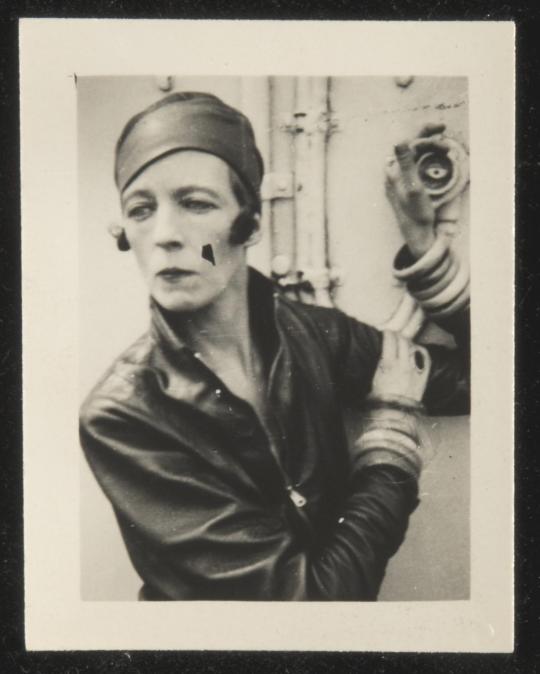
3 notes
·
View notes
Photo

Dieu oubliera tout le monde - même Robert McAlmon Francis Scott Fiztgerald Lettre à Ernest Hemingway 1927
Nous savons maintenant ce que c’est que la nuit
Ceux qui s’aiment d’amour n’ont qu’elle pour adresse.
Louis Aragon, La nuit d’exil
Pardonne toujours à tes ennemis, il n’est rien qui puisse les déranger autant. Oscar Wilde
Il m’adressa un sourire complice - bien plus que complice. L’un de ces sourires rares, source d’éternel réconfort, comme on n’en rencontre que quatre ou cinq fois dans sa vie. Fitzgerald, Gatsby le magnifique.
C’est souvent plus difficile de renoncer à ce qui blesse qu’à ce qui rend heureux. Fitzgerald, Tendre est la nuit
Mac est un animal sauvage, impossible à mettre en cage. Wallace Stevens, lettre à Williams, 14 octobre 1925.
Toute vie est une entreprise de démolition. Fitzgerald, La Fêlure
C’est un fantôme.
Qui apparaît et disparaît. Qui n’a jamais le même visage.
Lorsque je crois l’atteindre enfin, il suffit que j’approche la main pour qu’il s’évanouisse.
Parfois je me demande s’il a vraiment existé.
[...] Parmi les images figées qui restent de Robert McAlmon se détachent les portraits de Berenice Abbott, la photographe qu’il avait aidée à s’installer lors de son arrivée à Paris. Malgré les poses, l’ancienne assistante de Man Ray a su saisir McAlmon dans toute l’étendue de cette mélancolie que je ressens encore un siècle après.
“Personnalité magnétique”, “charme fou”, “beauté saisissante” et “homme insaisissable” sont les mots qu’on trouve le plus souvent dans les mémoires de ses contemporains pour le décrire. “Caustique”, “irrespectueux”, “violemment insatisfait de lui-même” et “sauvage” suivent aussitôt. Les écrivains qui l’ont défendu ont salué une rudesse rafraîchissante et une absence totale d’artifice. Ses proches le dessinent comme un ami loyal, généreux, drôle et terriblement malheureux.
[...] Quand Hemingway rencontra McAlmon, contrairement à ce qu’on pourrait penser aujourd’hui, c’est lui qui avait toutes les chances d’être ébloui. McAlmon était beau, riche, célèbre à Greenwich Village comme à Londres. Toujours entouré de femmes magnifiques, invité incontournable des fêtes, incarnant la quintessence des nuits parisiennes, il était surtout un éditeur et un écrivain promis au plus brillant avenir.
[...] McAlmon est plus une figure de la mélancolie que de la tragédie. Sa trajectoire est celle d’un homme brisé. Une fêlure. Au sens que lui donna Fitzgerald. Un effondrement de la créativité mêlé à la faillite intime d’une existence. Une fêlure silencieuse dans un vacarme d’enfer.
[...] Et La question revenait. Lancinante. Vertigineuse.
A quel instant avait-il raté l’embranchement ?
Il tentait de la chasser, elle ne le quittait plus.
Bon sang, mais qu’est-ce qui fait qu’un écrivain échoue ou réussit ?
La nuit pour adresse Maud Simonnot
4 notes
·
View notes
Quote
... I had some time ago decided that the money-makers on the grand scale are monomaniacs and fanatics and self-willed. - Robert McAlmon
cutie-with-booty
0 notes
Link
Twenty short nonfiction works chosen by the readers. A review of William Carlos Williams' "Kora in Hell" by Robert McAlmon is one of several selections devoted to literature and learning. Others are H. P. Lovecraft's "Literary Composition;" George Herbert Betts's "The Mind and Its Education;" William Wells Newell's "Michelangelo as Poet;" and Thoreau's "Wild Apples." Humor receives its due in "The Methods of Mr. Sellyer: A Book Store Study" (Stephen Leacock); "The Plumber" (Charles Dudley Warner); "The Yawn of the Computer Age" (NSA Cryptolog); and an unnamed boy's "Essay on Girls." Innovation and inquiry are treated in a 17th century study "Of a Deaf Man's Capacity to Speak;" a 1794 description of color blindness (John Dalton); and an 1896 exposition on scientific kite flying. Historical topics include the status of Palestine and Syria in the 1920's; democratic socialism (Victor Considerant); Letters to Muriardachus (11th century, Anselm of Canterbury), and an Illinois flour mill's change over from horse team to gas powered delivery truck in 1913. Politics meet history in readings of an Immigration and Customs Enforcement (ICE) detainee death notification letter and two selections from the 2019 Mueller Report--the executive summaries from volumes 1 and 2. Finally, for those with the munchies or a sweet tooth, Vol. 65 has recipes from Maria Parloa's "Chocolate and Cocoa and Homemade Candy Recipes." Summary by Sue Anderson. via Libricox
0 notes
